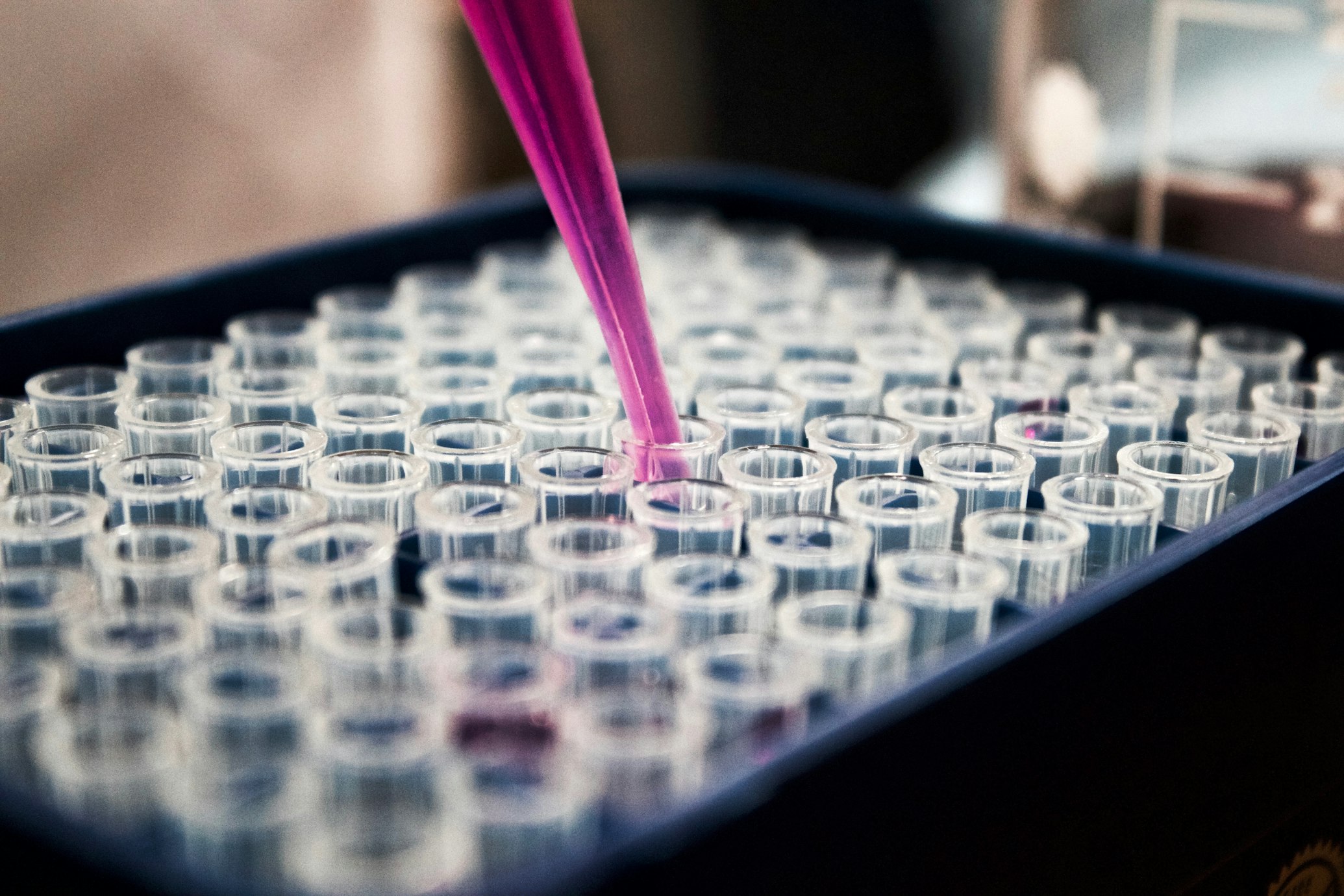The Alkyne Alchemist
How Copper Unlocks Precision-Built Molecules
Article Navigation
Imagine a molecular puzzle: take a simple, linear building block – an alkyne, essentially two carbon atoms triple-bonded – and transform it into a complex, three-dimensional structure with perfect handedness, all in one elegant sequence. Sounds like magic? For chemists crafting life-saving drugs or advanced materials, this is the holy grail. Enter a remarkable hero: copper hydride (CuH) catalysis, orchestrating intricate "cascade" reactions to turn alkynes into coveted chiral treasures known as enantioenriched 1,1-disubstituted products. This isn't just lab curiosity; it's revolutionizing how we build complex molecules efficiently and sustainably.
Why It Matters: The Power of Precision and Efficiency
Molecules aren't flat. Like hands, many exist in mirror-image forms (enantiomers). Often, only one "hand" (enantiomer) has the desired biological activity – think of the infamous Thalidomide tragedy. Creating molecules enriched in one specific enantiomer (enantioenriched) is crucial for safer, more effective pharmaceuticals, agrochemicals, and fragrances.
1,1-Disubstituted compounds – where one carbon atom holds two different groups – are particularly important. They form the core scaffolds of numerous drugs (e.g., anti-inflammatories, antivirals) and natural products. Traditionally, synthesizing these chiral centers precisely required multiple steps, harsh conditions, and generated significant waste. Cascade CuH catalysis offers a streamlined, elegant solution: multiple bond-forming events happen sequentially in a single reaction pot, driven by a tiny amount of copper complex, minimizing steps, waste, and energy.
The Copper Conductor: Key Concepts
- The Catalyst: Copper hydride (CuH) complexes are the star players. Specially designed ligands (molecular "handles" attached to copper) control its reactivity and, critically, its ability to distinguish between mirror-image pathways, ensuring high enantioselectivity.
-
The Cascade: Think of a domino effect or a Rube Goldberg machine at the molecular level. The CuH catalyst initiates a sequence:
- Hydrocupration: CuH adds across the alkyne's triple bond, creating a vinyl-copper intermediate.
- Capture: This reactive intermediate is captured by an electrophile (E+) present in the reaction mixture. Crucially, this step happens with high enantioselectivity dictated by the chiral ligand on copper.
- Further Transformation: Often, the initial adduct is primed for another reaction immediately, such as reduction, cyclization, or addition to another electrophile, building complexity rapidly. This is the "cascade."
- The Prize: The final product is a 1,1-disubstituted alkene (or sometimes alkane) where the central carbon bearing the two different groups (originating from the alkyne and the electrophile) is chiral and predominantly one enantiomer.

A Landmark Experiment: Building Blocks for Bioactive Molecules
A pivotal 2020 study (Nature, 2020, 581, 415–420) showcased the immense power and versatility of this approach. The goal: convert readily available terminal alkynes (R-C≡CH) directly into enantioenriched α-chiral allylic boronates – incredibly valuable building blocks for synthesizing complex bioactive molecules.
The Method: Step-by-Step Alchemy
Results and Analysis: Precision and Power
The results were stunning:
- High Enantioselectivity: Consistently achieved excellent enantiomeric ratios (er), often >95:5.
- Broad Scope: A wide range of aromatic, heteroaromatic, and aliphatic terminal alkynes were successfully transformed.
- Versatile Products: The generated α-chiral allylic boronates are like molecular Swiss Army knives.
- Efficiency: This one-pot cascade combined three distinct transformations with exceptional control.
Substrate Scope
| Alkyne (R-C≡CH) | Yield (%) | Enantiomeric Ratio (er) |
|---|---|---|
| Phenyl (C₆H₅-) | 92 | 97:3 |
| 4-Methylphenyl | 91 | 97.5:2.5 |
| 2-Naphthyl | 90 | 96:4 |
| Cyclohexyl | 85 | 95:5 |
| 2-Thienyl | 88 | 96:4 |
Ligand Control
Unlocking Molecular Diversity
| Allylic Boronate | Transformation | Final Product | Application |
|---|---|---|---|
| Ph-CH(Bpin)-CH=CH₂ | Oxidation | Ph-CH(OH)-CH=CH₂ | Fragrances |
| Ph-CH(Bpin)-CH=CH₂ | Fluorination | Ph-CH(F)-CH=CH₂ | PET Imaging |
| Ph-CH(Bpin)-CH=CH₂ | Suzuki Coupling | Ph-CH(Ar)-CH=CH₂ | Drug Scaffolds |
| cHex-CH(Bpin)-CH=CH₂ | Matteson Homologation | cHex-CH(CH₂OH)-CH=CH₂ | Natural Products |
The Scientist's Toolkit: Essentials for CuH Cascade Magic
Creating these molecular marvels requires specialized ingredients. Here's what's in the chemist's vial:
Research Reagents
- Terminal Alkyne R-C≡CH
- Hydrosilane Me₂PhSiH
- Electrophile B₂pin₂
- Copper Source CuCl
Additional Components
- Chiral Ligand DTBM-SEGPHOS
- Base KOtBu
- Solvent Toluene
- Proton Source MeOH
Conclusion: A New Era of Molecular Construction
The cascade CuH-catalyzed conversion of alkynes into enantioenriched 1,1-disubstituted products is more than just a clever chemical trick. It represents a paradigm shift in synthetic chemistry. By harnessing the unique reactivity of copper hydride and the exquisite control offered by chiral ligands, chemists can now build complex, three-dimensional molecules with pinpoint accuracy in remarkably efficient, step-saving cascades. This translates directly to faster discovery and development of new medicines, more sustainable production processes, and the ability to access molecular architectures previously deemed too difficult or time-consuming to make. It's a testament to the power of catalysis – where a tiny amount of metal, guided by molecular design, orchestrates the creation of intricate and vital chemical structures, one elegant cascade at a time. The molecular alchemists have found a powerful new tool, and the possibilities it unlocks are just beginning to be explored.
